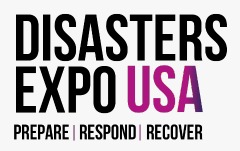What We’re (Really) Talking About When We’re Talking About Mobile (Hint: It’s the User)

It used to be when we said mobile we meant activities and devices defined strictly by mobility and the features associated with it, such as GPS, SMS, barcode readers, cell phones, etc. But when I found myself in my easy chair watching a ballgame on my laptop because it was closer than the TV, while checking other scores on my smartphone, mobility had little to do with it. If anything, I was the anti-mobile user. And that’s when I finally understood that the “mobility” landscape has expanded and covers a far greater range of uses than the simple term of “mobile” can encompass.
When we say “mobile” now, we are really referring to the broad range of user experiences in the digital world, the variety of devices for hosting that experience, and the new opportunities for accessing and enriching the experience. Mobility has changed the context, or expanded the contexts, and placed the individual user in unique situations as the focal point. When we hear dictums like “Mobile First!”, we’re really saying “User First!” And the user is a moving (mobile) target. And that’s a good thing.
How, where, and when are users (including your workers) accessing your information and interacting with you? And what are they looking for and doing? It’s not a one-size-fits-all answer; it’s a personal experience and personalized to the context. Whether you’re a government agency or a private agency, these new individualized conditions determine how you interact and provide information. That’s what Responsive Web Design is all about; it grew out of new demands created by mobile, but it’s more than mobile. Yes, all the strictly mobile elements still apply, and we need to think about those capabilities when designing applications for workers or delivering services to citizens, but that’s just a starting point, not the end. None of us can assume that mobile does not apply to our situation — the situation has changed. We don’t know how or when people will be interacting with us in this new digital landscape, but we do know that we need to meet them appropriately for their situation and device. If not, we won’t be meeting them at all. And that’s not a good thing.
There are programs in the federal government to get agencies starting to think about the mobile user. Recently, the Digital Services Innovation Center released the Mobile App Development Program to provide agencies with tools they need to make great mobile products available to the public.
Our team at Inergency is excited to announce our partnership with @Disasters Expo Europe, the leading event in disaster management.
Join us on the 15th &16th of May at the Messe Frankfurt to explore the latest solutions shaping disaster preparation, response and recovery.
To all our members, followers, and subscribers in the industry, This is YOUR opportunity to explore the intersection of sustainability and disaster management, connect with industry leaders, and stay at the forefront of emergency preparedness.
Don't miss out! Secure your complimentary tickets now and be part of the conversation driving innovation in disaster resilience. ➡️ https://lnkd.in/dNuzyQEh
And in case you missed it, here is our ultimate road trip playlist is the perfect mix of podcasts, and hidden gems that will keep you energized for the entire journey



